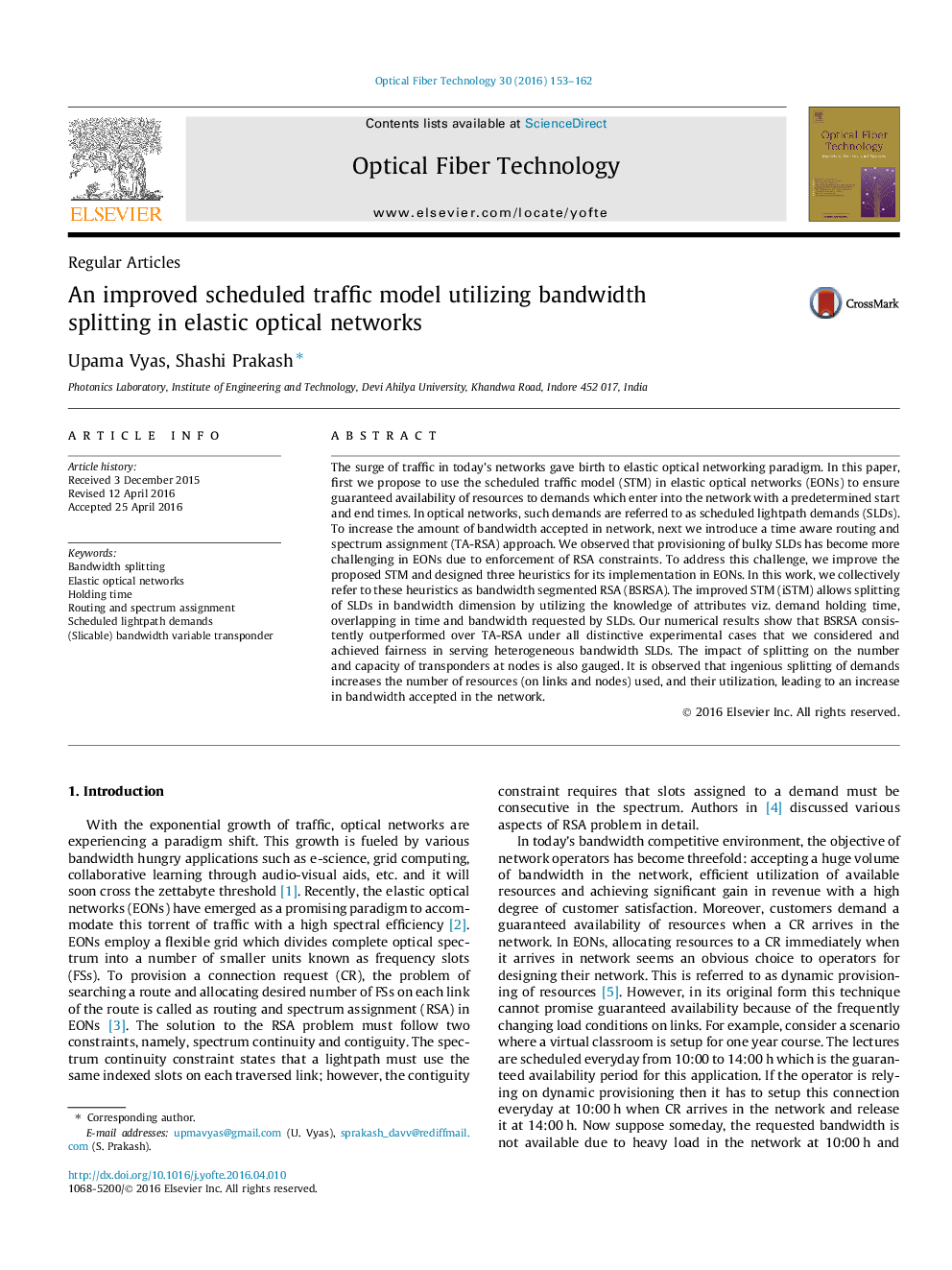| کد مقاله | کد نشریه | سال انتشار | مقاله انگلیسی | نسخه تمام متن |
|---|---|---|---|---|
| 462358 | 696749 | 2016 | 10 صفحه PDF | دانلود رایگان |
• A scheduled traffic model (STM) to be used in EONs is proposed.
• STM is improved by splitting bulky demands in bandwidth dimension.
• To implement the improved STM, three heuristics are proposed.
• Proposed heuristics leverage the knowledge of both bandwidth and time dimensions.
• Simulation results demonstrated fairly high throughput with more spectrum savings.
The surge of traffic in today’s networks gave birth to elastic optical networking paradigm. In this paper, first we propose to use the scheduled traffic model (STM) in elastic optical networks (EONs) to ensure guaranteed availability of resources to demands which enter into the network with a predetermined start and end times. In optical networks, such demands are referred to as scheduled lightpath demands (SLDs). To increase the amount of bandwidth accepted in network, next we introduce a time aware routing and spectrum assignment (TA-RSA) approach. We observed that provisioning of bulky SLDs has become more challenging in EONs due to enforcement of RSA constraints. To address this challenge, we improve the proposed STM and designed three heuristics for its implementation in EONs. In this work, we collectively refer to these heuristics as bandwidth segmented RSA (BSRSA). The improved STM (iSTM) allows splitting of SLDs in bandwidth dimension by utilizing the knowledge of attributes viz. demand holding time, overlapping in time and bandwidth requested by SLDs. Our numerical results show that BSRSA consistently outperformed over TA-RSA under all distinctive experimental cases that we considered and achieved fairness in serving heterogeneous bandwidth SLDs. The impact of splitting on the number and capacity of transponders at nodes is also gauged. It is observed that ingenious splitting of demands increases the number of resources (on links and nodes) used, and their utilization, leading to an increase in bandwidth accepted in the network.
Journal: Optical Fiber Technology - Volume 30, July 2016, Pages 153–162
